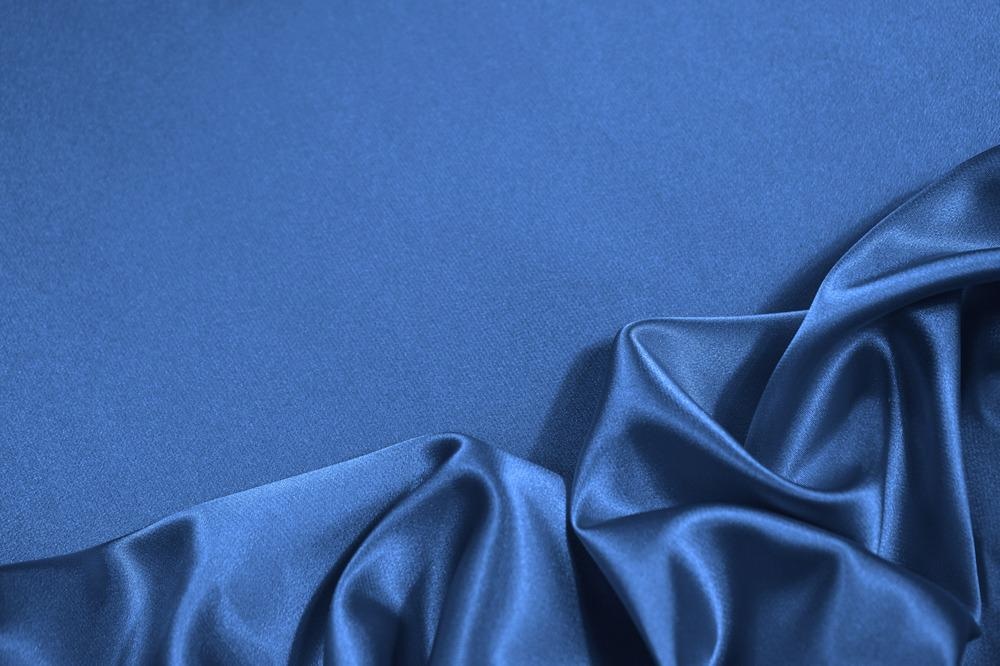Silk is a naturally occurring fiber that silkworms use to make their protective cocoons. Most silk is produced for the luxury textiles market, although it has medical applications as well. This article explores its alternative applications.

Image Credit: NatalyFox/Shutterstock.com
Silk is a remarkable material. Humans have been collecting “wild silk” from discarded cocoons and using it to make textiles for millennia. The labor intensity of this process and the luxurious feel of the resulting material gave silk its status as a luxury commodity item.
However, the material is also prized for its impressive structural properties. Due to its high weight-to-strength ratio, silk is still used for parachutes and tires for high-end racing bicycles.
Silk also has applications in medicine. Silk fibers are often used to make sutures for stitching, although the silk needs processing to make it safe to use in the human body. Some recent research has suggested that silk fiber is a good candidate for drug delivery, due to its potential for biocompatibility (when processed) and biodegradation.
However, concerns remain about the long-term safety of silk-based medical products in the human body. Silk sutures have served well for centuries, but they have to be removed after a relatively short period of time.
The biocompatible components of silk are its fibroid proteins. Silk sutures and their other medical applications rely on this biocompatibility. However, when fibroids degrade in the body they can trigger different immune responses and have even caused diseases.
Some researchers suggest that silk’s nanostructure properties also make it a good candidate material for advanced optics and electronics. As a thin film, silk follows nanoscale contours in the material. Silk fibers could be processed for optics applications and may be suitable substrate candidates for electronic devices that interact with biological surfaces.
Is Silk Sustainable?
By nearly every measure, silk is not sustainable. It scores worse for environmental impact in the Higg Materials Sustainability Index (MSI) than almost any other fiber – even worse than synthetic alternatives like polyester and rayon. From raw material to finished product, silk has a net negative environmental impact.
While silk from bred silkworms is of course easier to obtain than silk from the cocoons they leave behind in the wild, obtaining and processing it is still an extremely inefficient process. Every kilogram of silk consumes around 1,000 liters (220 gallons) of fresh water in production.
All of this water has to be boiled with live silkworms in it to obtain the silk fibers from their bodies. Heating water is an energy-intensive process, and the high energy use in silk manufacture is the biggest contributor to its negative environmental impact.
Further Reading: Non-Destructive Testing in the Textile Industry
Most of the silk produced today is made in South Asia. This means that air conditioning is needed to keep silk farms at stable temperatures and humidity levels, further ramping up the energy demands from manufacturing.
Processing silk causes even more problems. It has to be washed in bleach, which is then discarded. Then, dye baths are used excessively to give desired looks to the textiles (notably, dark colors). The fiber is dried at various stages of the production process, causing even more energy demands per kilogram of end-product.
Some have advocated for more investment in farmed silk to improve these inefficiencies. They argue this would enable more uses of silk that can capitalize on its biodegradability (and the possibility to “program” degradation to start at a specific time), combined with its unique nanostructural and strength-to-weight properties.
However, there are already alternatives to silk that are more viable solutions both for industry and the environment. Considering the wealth of new materials and compounds, fabrication methods for nanoscale structures, and bio-inspired materials research that is flourishing today, is it time to leave silk in the past?
Where Does Silk Come From?
The inefficiencies, pollution, and waste that are integral to silk production mean this activity is not compatible with the planet’s vital goals for sustainability.
Silkworms weave silk into cocoons to protect themselves during their pupal stage. To obtain this fiber, silk manufacturers boil or gas pupal silkworms alive. This causes their bodies to unravel while they die, enabling workers to obtain silk threads from them. Fibers from around 6,600 silkworms make just one kilogram of silk.
Some producers market “ethical” silk to consumers. These either claim to use wild silk from found cocoons, or to farm silkworms but allow them to make their cocoons and then move on from them before workers collect the fibers. However, there is no regulator in the world that verifies these claims, and multiple investigations have found them to be bogus.
Silk is easily avoided. There are numerous alternatives for clothing, and patients can request alternative sutures from their medical provider. In larger facilities, non-silk sutures will usually be kept to hand, and smaller facilities can readily obtain them from their usual suppliers.
References and Further Reading
Gellynck, K., P.C.M. Verdonk, E. Van Nimmen, et al. (2008). Silkworm and spider silk scaffolds for chondrocyte support. Journal of Materials Science: Materials in Medicine. Available at: https://doi.org/10.1007/s10856-008-3474-6.
Is Silk Sustainable? All You Need to Know About the Environmental Impact of Silk. Tiny Eco Home Life. [Online] Available at: https://www.tinyecohomelife.com/is-silk-sustainable.
Omenetto, F. (2011). Silk, the ancient material of the future. Ted Talks. [Online] Available at: https://www.ted.com/talks/fiorenzo_omenetto_silk_the_ancient_material_of_the_future/transcript.
Disclaimer: The views expressed here are those of the author expressed in their private capacity and do not necessarily represent the views of AZoM.com Limited T/A AZoNetwork the owner and operator of this website. This disclaimer forms part of the Terms and conditions of use of this website.